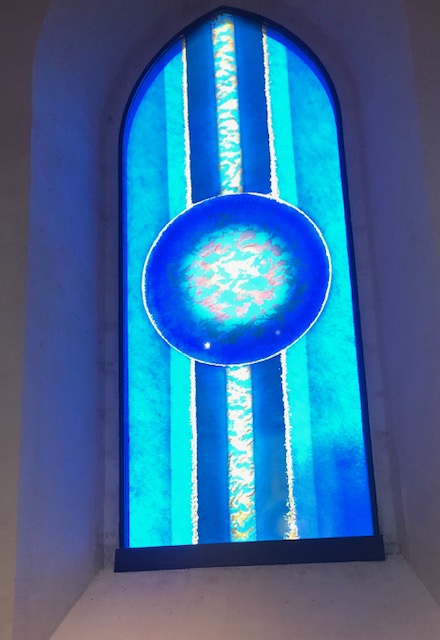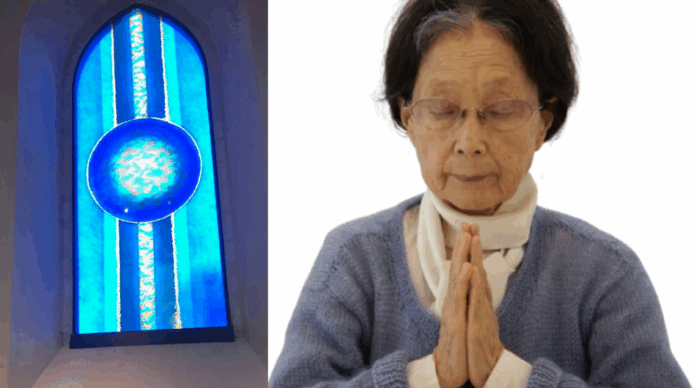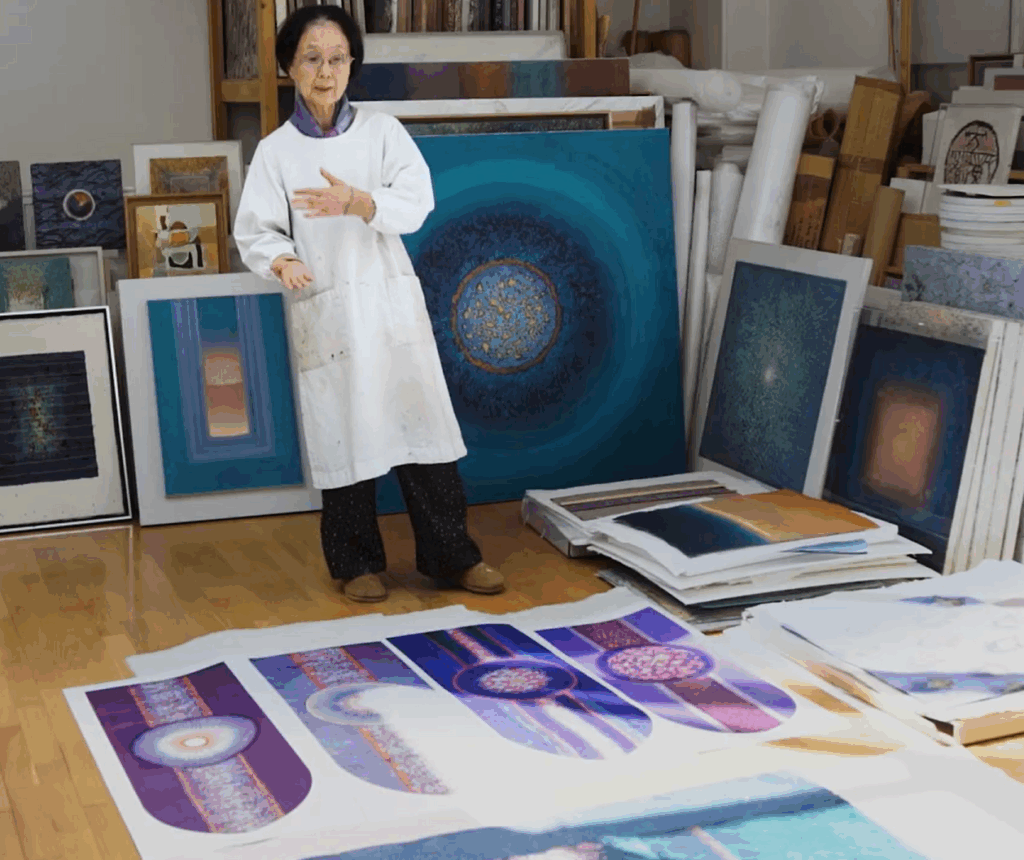The stained glass windows in the treasure room
of Chartres Cathedral,
a work by Bang Hai Ja
The message of Light

"Light creates Life,
from Life comes Love,
from Love comes Peace.
We are lights
and we will return to the Light".
(interview with Bang Hai Ja
on his inspiration)
"Chartres blue and Hai Ja blue »
Testimony of Françoise Maupin
Bleus de Chartres
To contemplate Bang Hai Ja's stained-glass windows in Chartres Cathedral, you have to follow a short itinerary devised especially for this purpose. Once you're in the nave, you'll need to find the staircase that takes you to the first floor of the Chapelle Saint Piat, in the Treasure Room, then go down a dark, narrow spiral staircase and finally arrive in a secret room, tiny in comparison with the great, majestic Cathedral. But you will be amply rewarded for this (small) effort: this is where Bang Hai Ja's stained glass windows have found their place: four large pieces of glass, long and narrow, crossed by wide vertical bands, with the large circles she loves at their centres, shining here like suns, the artist's cosmos. Blue dominates, flirting with turquoise and cyan, but also giving way to gold and orange. These colours let in a soft, warm light. We are in the abstract, while next door, in the magnificence of the immense church, the figurative triumphs, and yet Bang Hai Ja's work is self-evident: all is harmony and serenity in this chapter house. And if it weren't an exhibition space, you wouldn't be surprised to find meditation cushions and incense sticks.
Bang hai Ja never saw the stained glass windows installed; she died in 2022, and they will no doubt be seen as the pinnacle of her work. For a Korean woman of Buddhist tradition (but baptized Catholic) to have been entrusted with these windows in one of France's most prestigious cathedrals, whose 12th and 13th century stained glass windows are also world-famous, especially for their particularly luminous "Chartres blue", is a magnificent consecration. Now there's also 'Hai Ja' blue.
Throughout her life, she has conceived her work as a spiritual quest, a never-ending search for light, not when it illuminates people and things, but the light itself which, for her, is the matter of the universe, "a source of joy, peace and love". The result is these radiant paintings, and it is under this patronage that she has placed her stained glass windows.
But we can't talk about Bang Hai Ja's work without mentioning the "dialogues" she discovered when they were published in 1976, and which have stayed with her ever since. She fed off them: with her husband Alexandre Guillermoz, an ethnologist specialising in Korean shamanism, they spent nearly ten years every morning translating this incandescent work into Korean and had them published, along with Morgen in 2017.
And it's a great joy for us to see that the cultivation of Dialogues can produce such beautiful fruit.
Françoise MAUPIN


